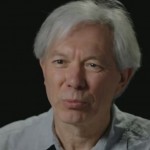Antiquarian Theories Combined
Other archaeologists felt there might be more to the great monument than just acting as an astronomical marker. But discovering what actually took place inside Stonehenge has proven problematic. The Stonehenge precinct has been repeatedly dug and interfered with since at least the 17th century. Curious but many a well-meaning antiquarian has been all too eager to dig up the monument and the surrounding landscape. So it’s likely that much crucial evidence has been lost and will never be recovered.
Archaeologists today need to work with the knowledge that there will always be missing pieces to this puzzle
With that in mind, some archaeologists came up with a counterintuitive way to shed new light on the monument, going back to the much older investigations and re-examining the theories of the antiquarians.
Aubrey Burl
In 1985, Timewatch, Magic Circles, featured the work of Aubrey Burl, who combined up-to-date astronomical ideas with the evidence uncovered by the antiquarians.
Peter France “To us, Stonehenge is this configuration of stones. But the place itself has a history which is older than even the oldest of them. The latest theory on its origins comes from Aubrey Burl, an authority on stone circles in Britain.”
But what do you think this place was built for?
Aubrey Burl “I think, in the first place, long before these stones, this was a charnel house, a place where the dead were brought until the flesh rotted from their bones, and the entrance to this house pointed acrossthere to the north-east, where the moon rose at its most northerly.
Now, long before Stonehenge, there were other burial places on Salisbury Plain, all around Stonehenge, called long barrows and they also pointed towards the moonrise.
And in them we find dead bones, pits filled with earth and skulls of oxen – exactly the same things we find here at Stonehenge. There are pits filled with earth, and just where we’re standing, at the very centre, people like Inigo Jones, the Duke of Buckingham, dug here in 1620 and dug up skulls of oxen.
If you put those things together with the moonrise, surely that means that Stonehenge was somehow connected with death and burial.”
Professor Mike Parker Pearson “We’re never going to get a full picture of what happened. It’s in the nature of archaeology, As somebody said, we work with bad samples of depleted information. But I don’t think that really stops uis from trying to work out what the unknowns are. The useful thing about the early work in Stonehenge was that it was quite concentrated in the centre, where they may not have done as much damage as we now think.”

Mike Pitts “It’s funny being an archaeologist and working at Stonehenge, because if we just discovered it like some 19th-century explorer in the South American jungle, there would be this great blank canvas and this fabulous ruin and you could start from scratch, but Stonehenge isn’t like that. There have been generations of studies and thought and this thicket of ideas and information that sometimes can get in the way.”
The antiquarian idea put forwards by Aubrey Burl that Stonehenge was somehow linked to death and burial was taken a step further by another group of archaeologists in the 1990s.
